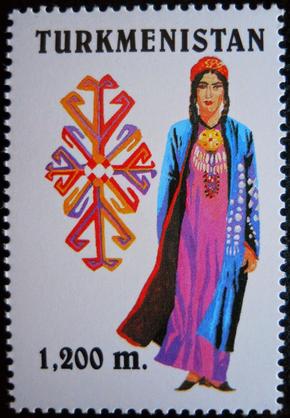
Stamp Matters - Meet the -stans.
It is time again for me to wish all my readers a very Merry Christmas and a prosperous 2024. At the local stamp club we have noticed an increase in numbers as older people renew their interest in stamp collecting. We hope this continues and we would like to see a few more ladies coming to join us. You will be welcomed (figuratively) with open arms.
This month I would like to introduce you to the -stans. They are a group of seven adjoining Asian countries lying between Russia, Iran, India and China. Each is home to an ancient tribe who have lived there since time immemorial. They are all Islamic countries and each has their own traditional culture.
They owe their historic economic existence to the Silk Road, the ancient trading route stretching from China to the West. The northern-most five have lately been part of the USSR and their modern governance mirrors Russian patterns. Pakistan in the south-east has British-influenced government while the last, Afghanistan, has resisted outside influence since Alexander the Great conquered it over two millenia ago.
The northern -stans, Kazakhstan, Kirghizstan, Tajikistan, Turkmenistan and Uzbekistan came into being with the demise of the USSR and have issued their own stamps ever since. The stamps are usually very attractive and they produce fewer than most countries each year, making any of them a good country to collect. Pakistan began issuing stamps when it broke away from India in 1947 and Afghanistan issued its first stamps in 1871. Its’ early stamps were printed on rough paper and are quite expensive today.


The northern -stans rely on oil to carry their economies and their proximity to China provides a ready market. Each has their own language and currency, although Kirghizstan and Tajikistan currency share the same name, som. Because of their recent heritage, Russian is a common second language. While Tajikistan is relatively small, the others cover reasonably large areas, although the land is of poor quality and the populations are confined largely to the cities.
Their winters are harsh, and the summers hot, with temperatures varying from -50 in winter to 30 in summer. They have a relatively dry climate with precipitation coming mainly as snow and snowmelt. Their river systems flow into large lakes or the Caspian Sea which is in the Western border of Turkmenistan.

The area is home to the Bactrian camel, with its two humps, the snow leopard, the musk deer with its protruding canine teeth, the wolf and the Eurasian otter among others. The Caspian Sea is the home of the caviar-producing fish, the sturgeon, which can grow to a length of eight metres but most are about three metres in length.
The -stans capitals are quite modern cities with many tall buildings but the towns and villages are more primitive. The highways are also modern but few in number. Most country roads are rough but the scenery can be quite spectacular. Well worth a visit to the adventurous traveller.


